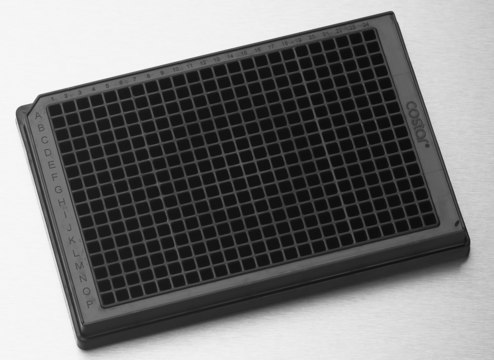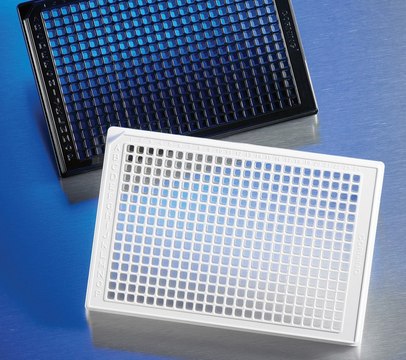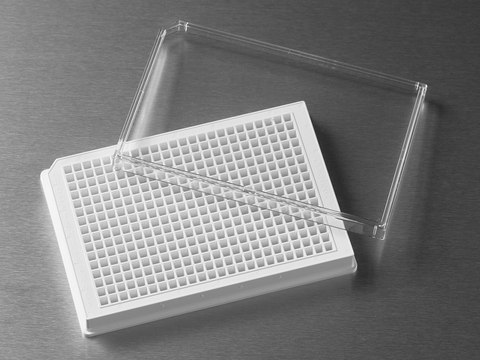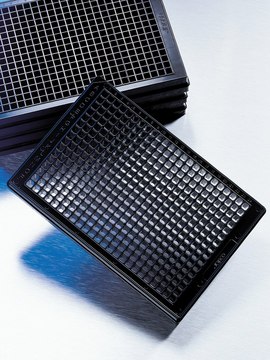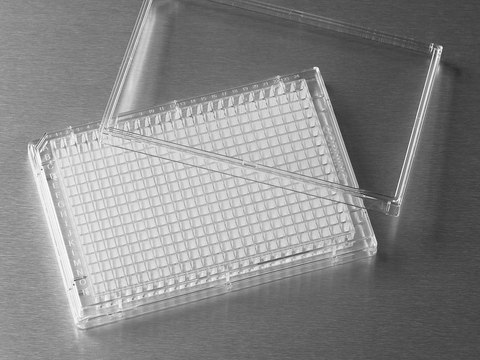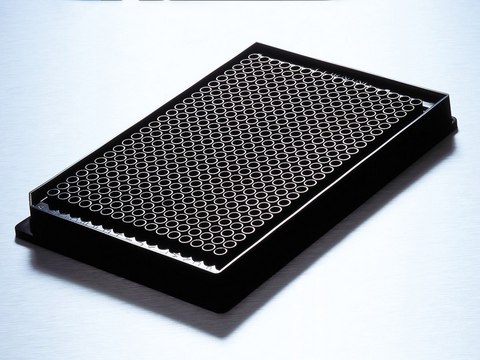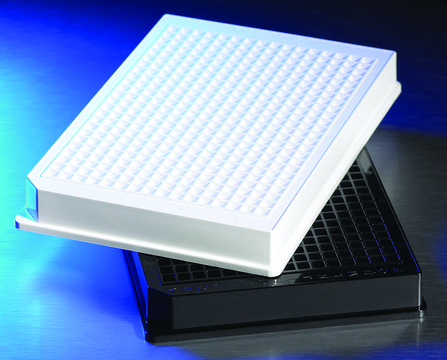CLS3680
Corning® 384 well plates
lid, sterile; γ-irradiated
Synonym(s):
384 multiwell plates, 384 well low volume plates, 384 well microplates, 384 well microtiter plates, 384 well plates, 384 well tissue culture treated plates
About This Item
flat bottom clear wells
polystyrene
square clear wells
384 wells
Recommended Products
material
clear polystyrene plate
flat bottom clear wells
polystyrene
square clear wells
sterility
sterile; γ-irradiated
feature
lid
skirt
packaging
case of 100
manufacturer/tradename
Corning 3680
maximum volume
112 μL
size
384 wells
384 wells
working volume
80 μL
color
clear
binding type
non-treated surface
Looking for similar products? Visit Product Comparison Guide
General description
Features and Benefits
- Corning® 384 well plates are ELISA microplates with a working volume of up to 20 to 80 μL
- Standard microplate footprint and dimensions
- Not treated polystyrene surface
- Hydrophobic surface binds biomolecules by passive interactions
- Applicable for the immobilization of large molecules
- Untreated microplates have a binding capacity of approximately 100 to 200ng IgG/cm²
Legal Information
Choose from one of the most recent versions:
Certificates of Analysis (COA)
It looks like we've run into a problem, but you can still download Certificates of Analysis from our Documents section.
If you need assistance, please contact Customer Support.
Already Own This Product?
Find documentation for the products that you have recently purchased in the Document Library.
Our team of scientists has experience in all areas of research including Life Science, Material Science, Chemical Synthesis, Chromatography, Analytical and many others.
Contact Technical Service
